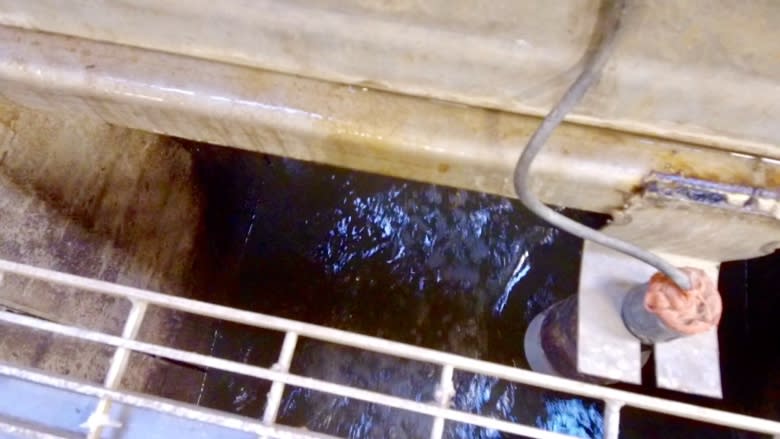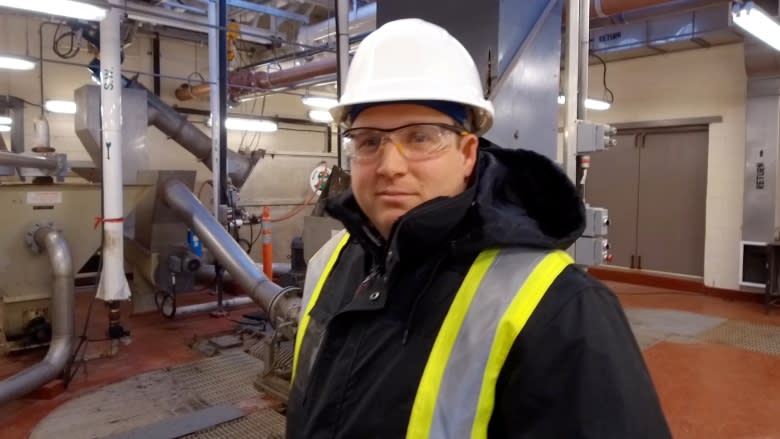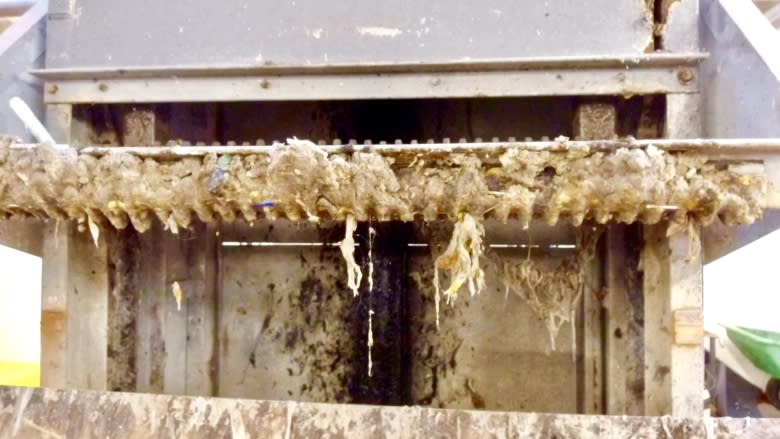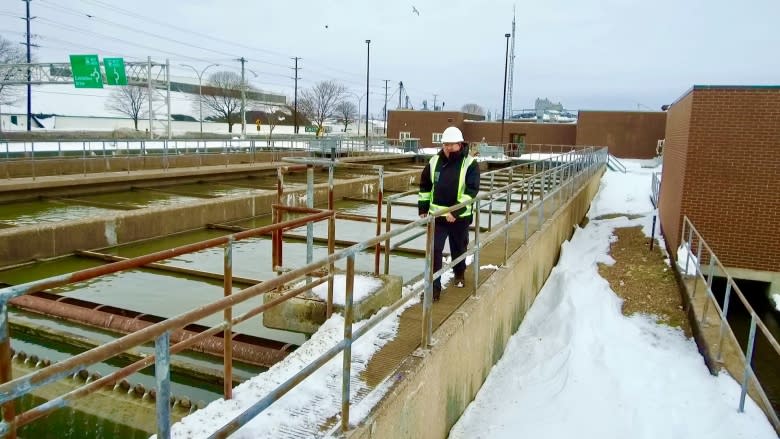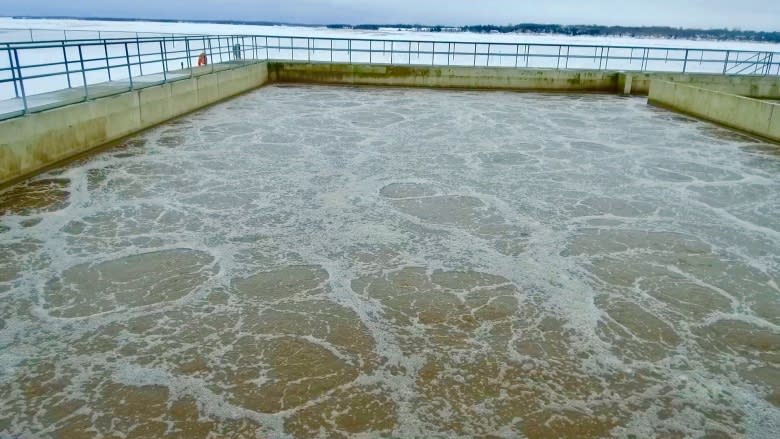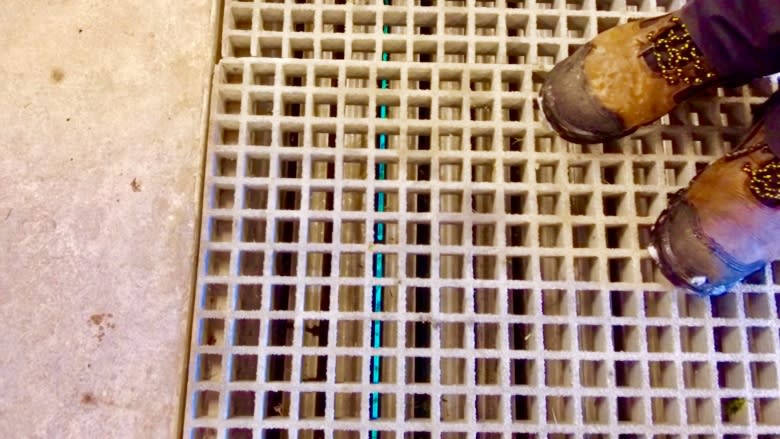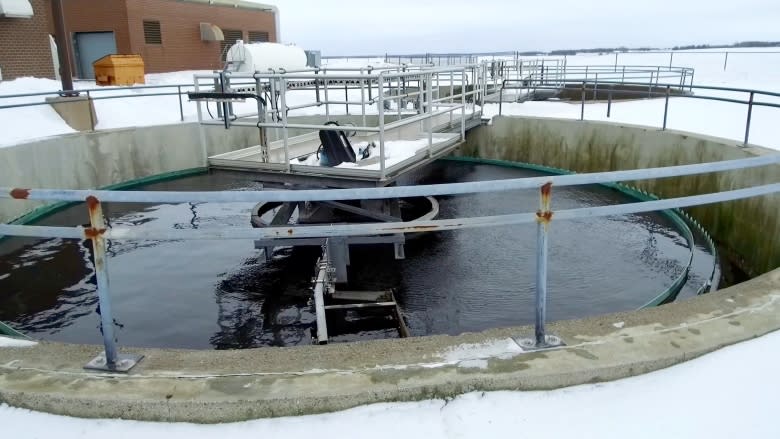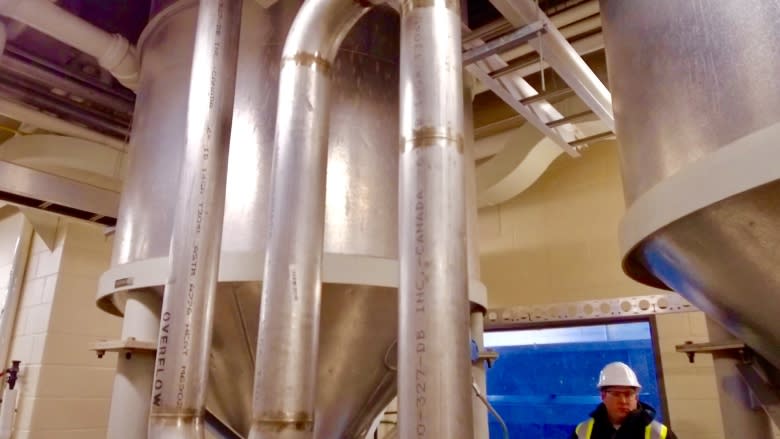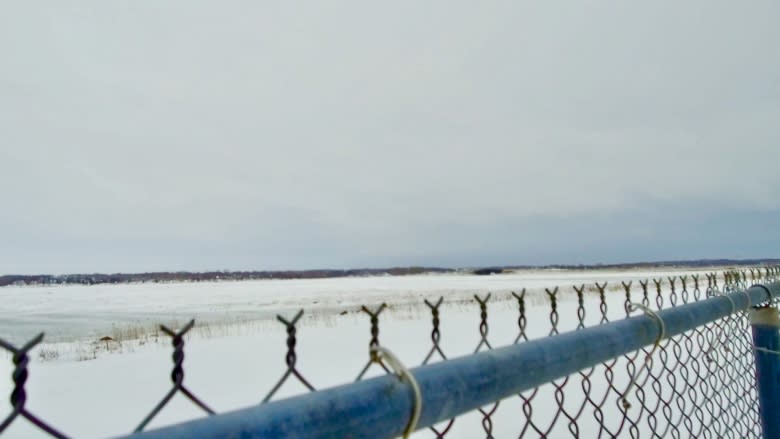After you flush: Take a tour of P.E.I.'s largest sewage plant
The smell inside the Charlottetown Pollution Control Plan isn't as bad as you might think it is — despite 20 million litres of raw sewage flowing into the facility every day.
"Fresh sewage doesn't have that strong of an odour," said plant superintendent Steven Stewart. "It's mostly water. It's like 99 per cent water that comes in."
Raw sewage from the capital city enters the plant in a building called the headworks.
Before the treatment process begins, two things happen in the headworks. First, grit material such as sand, gravel and eggshells is removed.
Then a trash rack removes garbage such as plastic spoons, disposal wipes and pieces of wood that people aren't supposed to flush.
Careful what you flush
"A lot of untreatable waste that doesn't decompose should not be flushed down the toilet," said Stewart.
"Sometimes it does get through the process and it ends up in pumps, plugging pumps, plugging up different parts of our process."
The next stage, called primary clarification takes place outside, in one of the many open cement ponds.
Here, close to 60 per cent of raw solids are removed from the stream of sewage.
Solids separated
The separated solids sink to the bottom, while the water begins a clarification process for eventual release into Charlottetown Harbour.
"It also removes the floatable material from our waste stream — grease and fat that comes from kitchen waste and restaurants mostly and from humans as well," said Stewart.
A lot of seagulls hang around this area of the facility.
"They're feeding on food that's in the waste stream … if it floats will come to the top and the animals will pick it off.
Before upgrades to the plant in 2007, this would have marked the last stage of the process, with the effluent going into the Hillsborough River..
Cleaner water going into river
"Now we have much cleaner, we have secondary treatment. Primary treatment removes about 40 to 60 per cent of the waste material, and secondary treatment removes 95 to 96 per cent."
Much of the work to clean up the water in the secondary treatment stage is done by nature, with a little help from aeration.
"We add air back into our system, which supports the biological life that's in here," said Stewart.
Good bacteria eat solid wastes
"They are naturally-occurring bacteria. We just provide the right conditions and they thrive in this kind of environment and consume the waste that's in the waste stream."
The water goes through one more stage before emptying into the Hillsborough River — past some huge UV lights for disinfection.
"UV light in contact with pathogens, with bacteria and viruses, they inhibit their ability to reproduce so they end the lifecycle of those bacteria and pathogens," said Stewart.
It takes the water about 24 hours to pass through the plant. The solid waste take 20 days, and it has to go through more stages before it's clean.
The next stage is the one that you might smell when you drive by the plant.
It's where the solids are thickened, and settle to the bottom of yet another cement pond.
Pasteurisation kills pathogens
The next stage is not what you expect to find in a sewage treatment plant.
Pasteurisation takes place in a spotlessly clean building with huge stainless steel tanks.
"We pump that solid material through a heat exchanger where we pasteurise those solids, just like you would milk — 70 Celsuis for 60 minutes."
The final stage is called the anaerobic digester. It's similar to what happens in your stomach.
"Our two anaerobic digesters break down the organic matter and break down the solids. Anaerobic means there's no oxygen, so the bacteria do that job."
Turned into rich soil
After the material has been digested, it's about 20 to 25 per cent solids. It drops out in a steamy, dry form, almost like soil.
"So the bio-solids you see dropping out there, they meet the criteria for exceptional quality, Class A bio-solids," said Stewart.
"They're hauled off site and we take them and they get spread on agriculture land."
There's one more useful by-product from this process — methane gas, which comes in handy during the winter.
"We use that bio-gas in our boiler to get heat for our pasteurisation and we use the heat to heat our buildings."
Making use of methane
In summer, the extra gas is flared off. That's when you might notice that Olympic-sized flame as you drive by the plant.
Steven Stewart is hoping others will realize that working in the sewage treatment plant is not so bad.
"They think you're working around sewage and stuff, but it's a lot of technical. We're running the equipment more so than we're working in the sewage."
- MORE P.E.I. NEWS | Study shows more women moving into trades in P.E.I.
- MORE P.E.I. NEWS | 'A little bit early': Mild P.E.I. weather has maple syrup taps flowing

